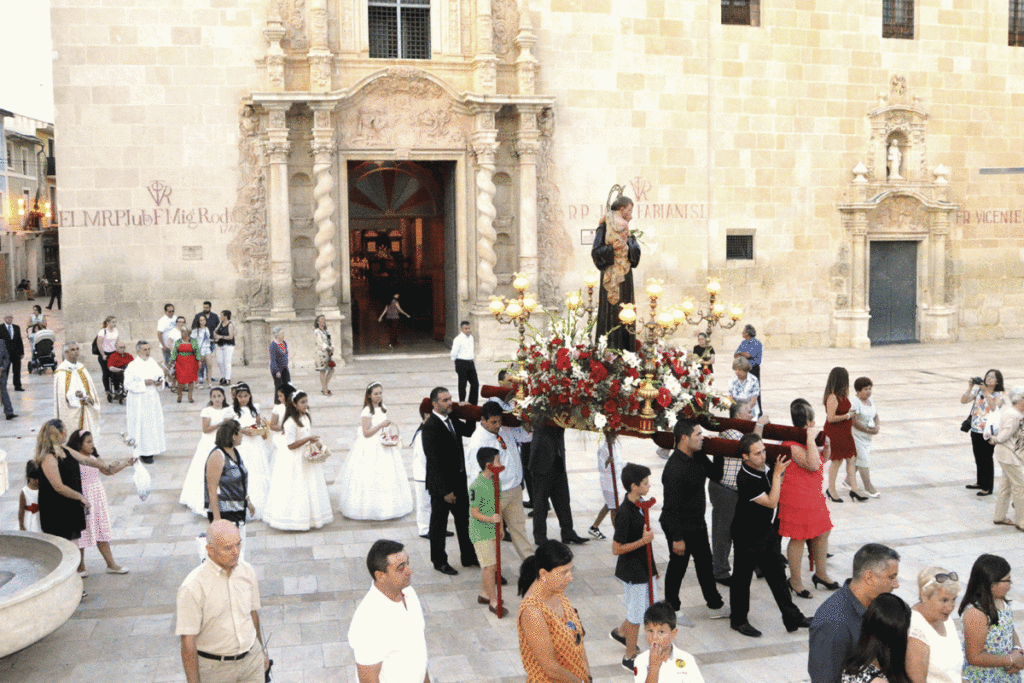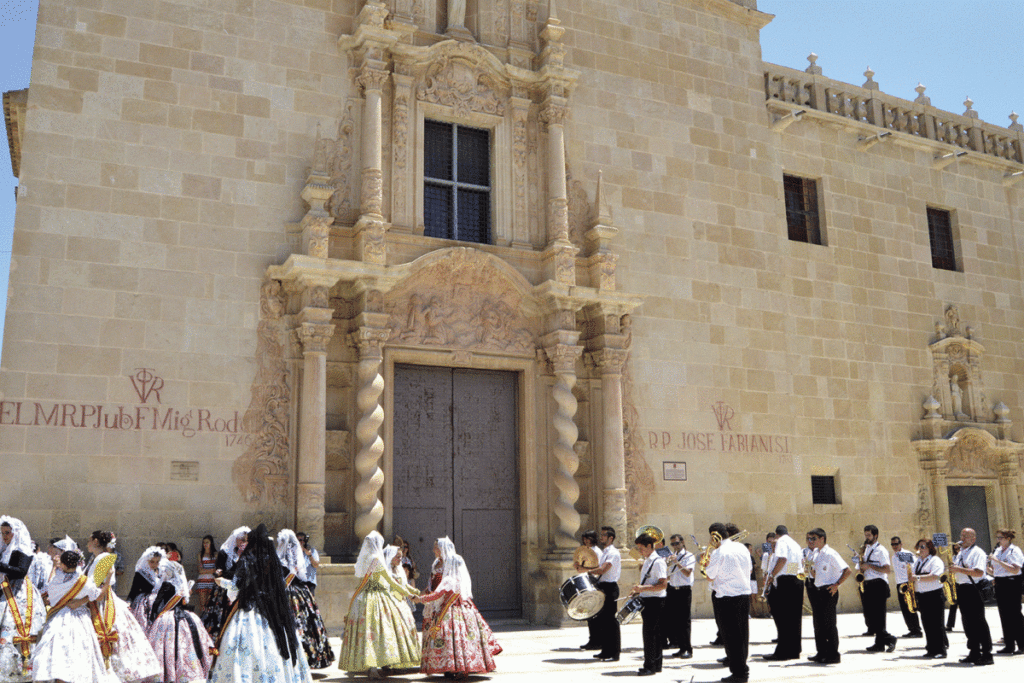Saint Anthony of Padua Festivals
The festivities of San Antonio de Padua are celebrated in Santa Faz, around the saint’s feast day, on June 13 of each year.
Devotion to the saint stems from the Franciscan tradition around the convent of the Holy Face. Since the arrival of the Poor Clares in 1518, the main saints who received worship were the Franciscans such as Santa Clara, San Diego de Alcalá or San Buenaventura, evidently including San Francisco himself. Without us knowing why, the Lisbon saint was chosen as the patron saint of the small town and even today we can enjoy his friendly festival which is, along with the Pilgrimage and Fair of the Holy Face, the main celebration enjoyed by the residents. of this endearing enclave, from an uncertain date to the present day, with some exceptions such as the Civil War.
All events are organized by the Festival Commission of San Antonio de Padua with the collaboration of the City Councils of Sant Joan and Alicante, into whose municipal terms we remember Santa Faz is divided.
Currently it is always celebrated on the weekend from Thursday to Sunday, using the Sunday immediately after June 13 as the date to set the festival. The events and celebrations are announced with the traditional Llibret distributed among neighbors and collaborators.


The celebration begins on Thursday with the lighting of the lighting, parades and traditionally, spankings were also distributed among the neighbors, which precede the festive proclamation.
Friday already begins with despertà, although the strong events begin at night with the different musical shows.
On Saturday the paella contest takes place, one of the most important events for neighbors who gather to compete with their culinary delights. The meal takes place in the streets of the town between good and healthy harmony. In the afternoon the costume contest takes place, reserved especially for the little ones, although there have been many times in which the older ones have also participated. At night the party continues with various music, entertainment and variety shows, as it has been traditionally called. For many years, a street dinner has also been held for neighbors and visitors, helping to create a very pleasant festive atmosphere.
However, the main events are reserved for Sunday, the day dedicated to the patron saint. The morning begins with the awakening in which music and gunpowder especially take part. Shortly after, the offering of flowers to San Antonio takes place in which many people and festive entities from Sant Joan and the surrounding area participate, accompanied by a music band and a group of dolçaina. Once the procession reaches the temple where the bouquets are placed, the main mass of the festivities begins. It should be said that in all these events, the users of the San Rafael Center, located next to Santa Faz, take on a great role.
The morning events end with the typical mascletà. In the afternoon the San Antonio procession takes place, which for many years is linked to the Corpus Christi procession and in which a large number of people also participate. The events conclude with a fireworks display.
Did you know that...?
Saint Anthony of Padua is the saint who is turned to for certain impossible cases, lost things, imprisoned people and the sick. However, one of their main occupations is to find boyfriends or partners for singles who ask them.
In ancient times, the image of the saint was processed on a boat-shaped litter, remembering the passage of his life in which he was dragged by the current of the sea towards his destination against his will.
On the façade of the monastery, one of the four niches in the intercolumnia was occupied by the bust of Saint Anthony of Padua, along with other Franciscan saints. These statues were destroyed in the Civil War.
After the procession, on many occasions the band has played some secular piece of music dedicated to the Poor Clare nuns and the neighborhood. On one occasion ‘La cucaracha’ was even heard.
Due to the dates on which the festival takes place, on numerous occasions it has coincided with the post-electoral period, so that the events of these festivals have been the first in which many newly elected authorities in the democratic elections have participated.
